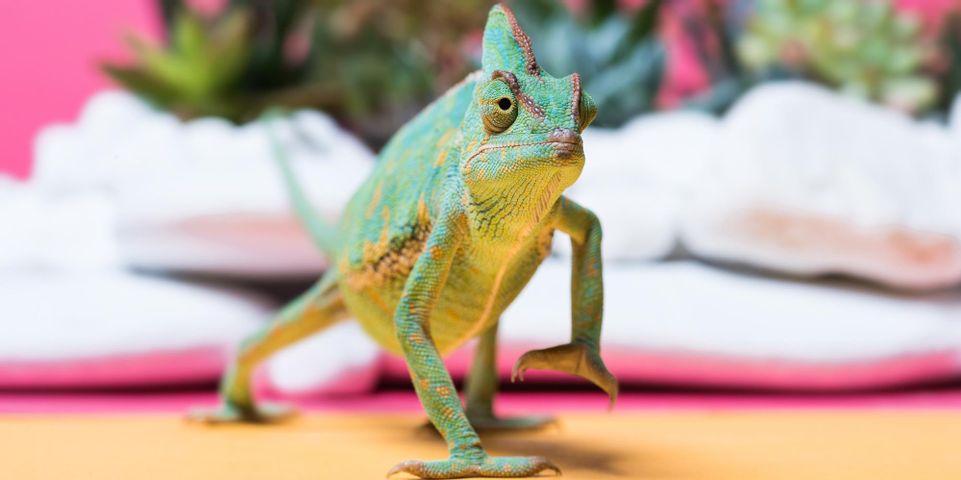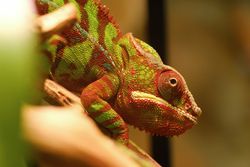
Chameleons are relatives of iguanas that have curled tails and color-changing skin. These exotic pets require an advanced care taker and a reptile veterinarian to ensure they’re in top shape and have a great quality of life. Here is a basic guide to caring for these unique creatures.
Chameleon Care 101
How Do They Behave?
Chameleons range from ½ inch to 27 inches long and grow for their whole lives. These reptiles live usually 3 to 10 years in captivity, and shed their skin in patches, never losing their entire epidermis at once.
Some chameleons often live in trees or bushes, while others live on the ground in forests. These animals require specific humidity levels, temperatures, and light exposure to thrive.
Chameleons change color if they are scared or angry, and can morph into bright hues when they are mating. The reptiles make this adjustment by relaxing or tightening their skin, changing the structure of the upper cell layers. Brighter colored skin indicates that a chameleon is happy, while browns and blacks may mean they are stressed.
How Do You Care for Them?
 These reptiles like to live alone and have tongues up to 1.5 times the length of their bodies. They eat mostly insects, small invertebrates, or leafy greens. Feed your little buddy with roaches, mealworms, crickets, wax moths, and super worms.
These reptiles like to live alone and have tongues up to 1.5 times the length of their bodies. They eat mostly insects, small invertebrates, or leafy greens. Feed your little buddy with roaches, mealworms, crickets, wax moths, and super worms.
Chameleon owners must be familiar with a reptile veterinarian who can perform regular health check-ups and address conditions or concerns as they emerge. They may suggest dusting the chameleon's meals with calcium and vitamin D supplements to avoid deficiencies and reduce the risk of painful mouth rot caused by too much drool.
Most owners have cages that are at least 3-feet by 3-feet by 4-feet to provide plenty of space to move around and catch insects without injuring their unique three-toed feet. Look for a cage that has three mesh sides coated in vinyl to protect the animal when it climbs the container.
Add branches and live, non-toxic leafy plants to give the animal places to hide and climb. Look into your breed specifics to learn what temperature they prefer, likely between 72 and 95 degrees Fahrenheit. Many chameleons want areas of higher temps for basking and lower ones for sleep.
Use a drip system or spray a mist over the cage twice daily to keep the leaves moist. These reptiles won’t ingest water in a bowl; they drink droplets off the foliage. Most species need UVA and UVB rays to form vitamin D so they can take in calcium from their food. Look into using lighting to provide sunlight exposure that windows filter out.
If you’re looking for a reptile veterinarian, contact A-4 Animal Hospital in Lancaster County, NE, to set up an appointment. The family-oriented practice cares for traditional and exotic pets, from dogs and cats to birds and small mammals. Call the Lincoln-area reptile veterinarian at (402) 475-2282 or visit the website for information on their general check-ups, boarding, and surgical offerings.
About the Business
Have a question? Ask the experts!
Send your question

